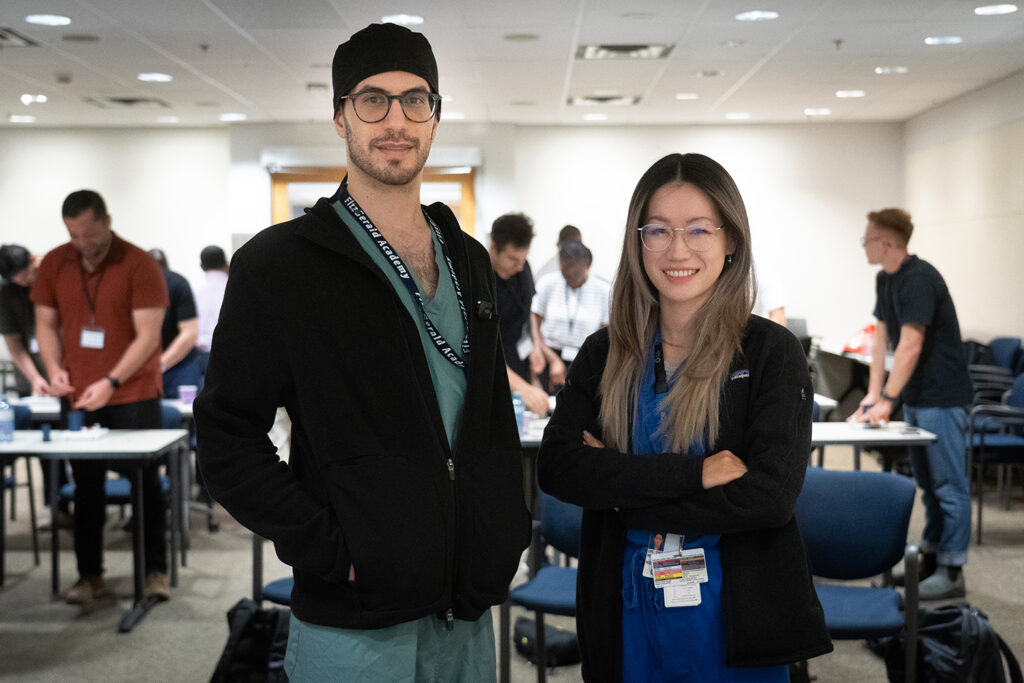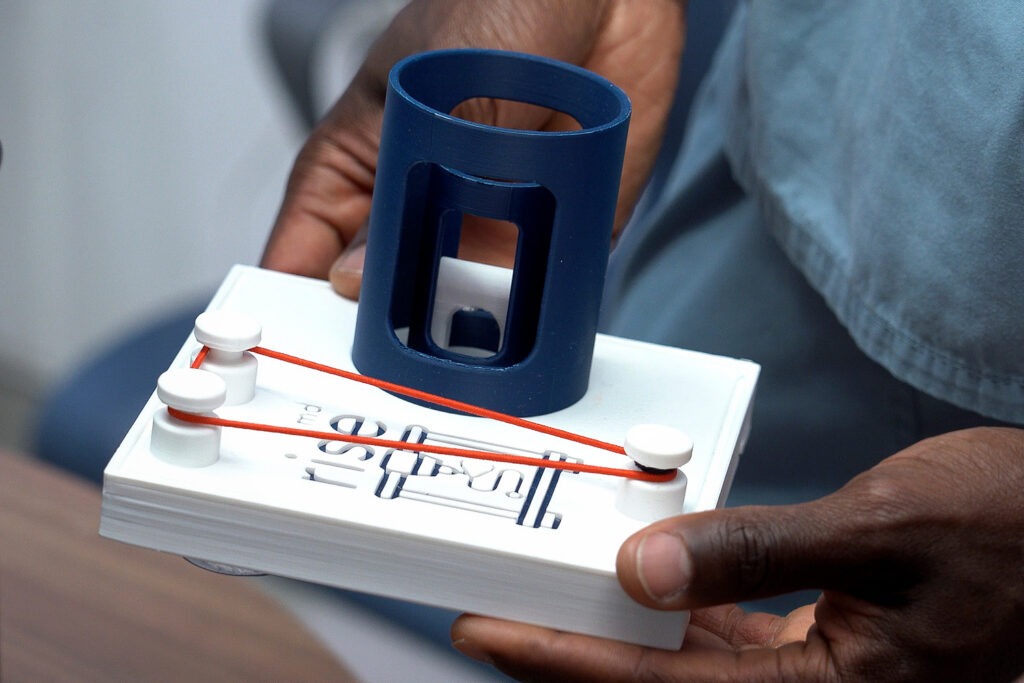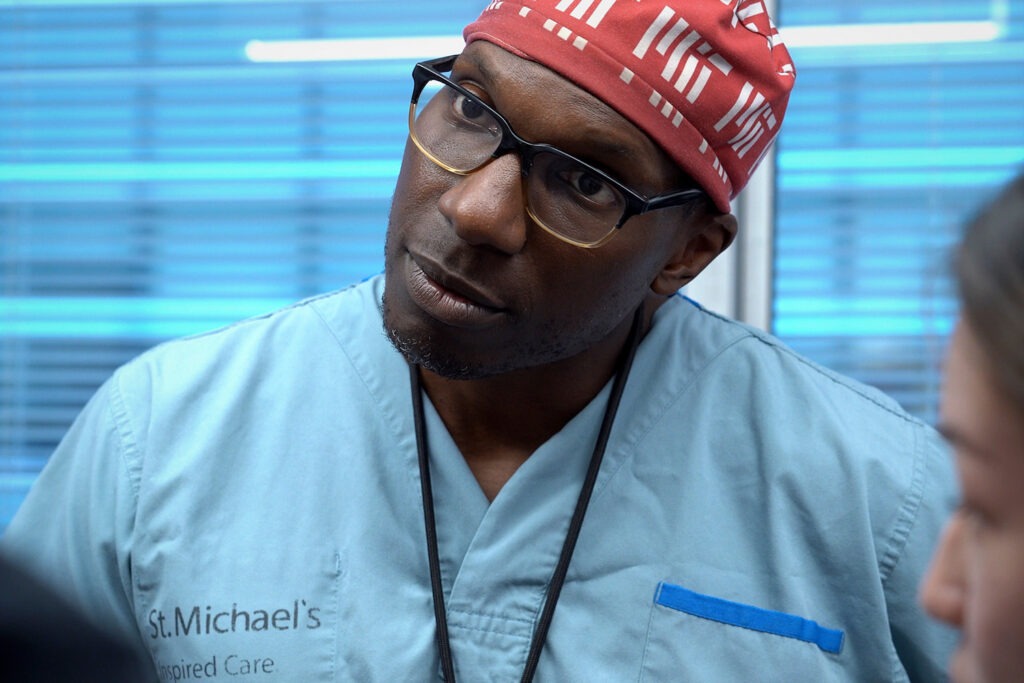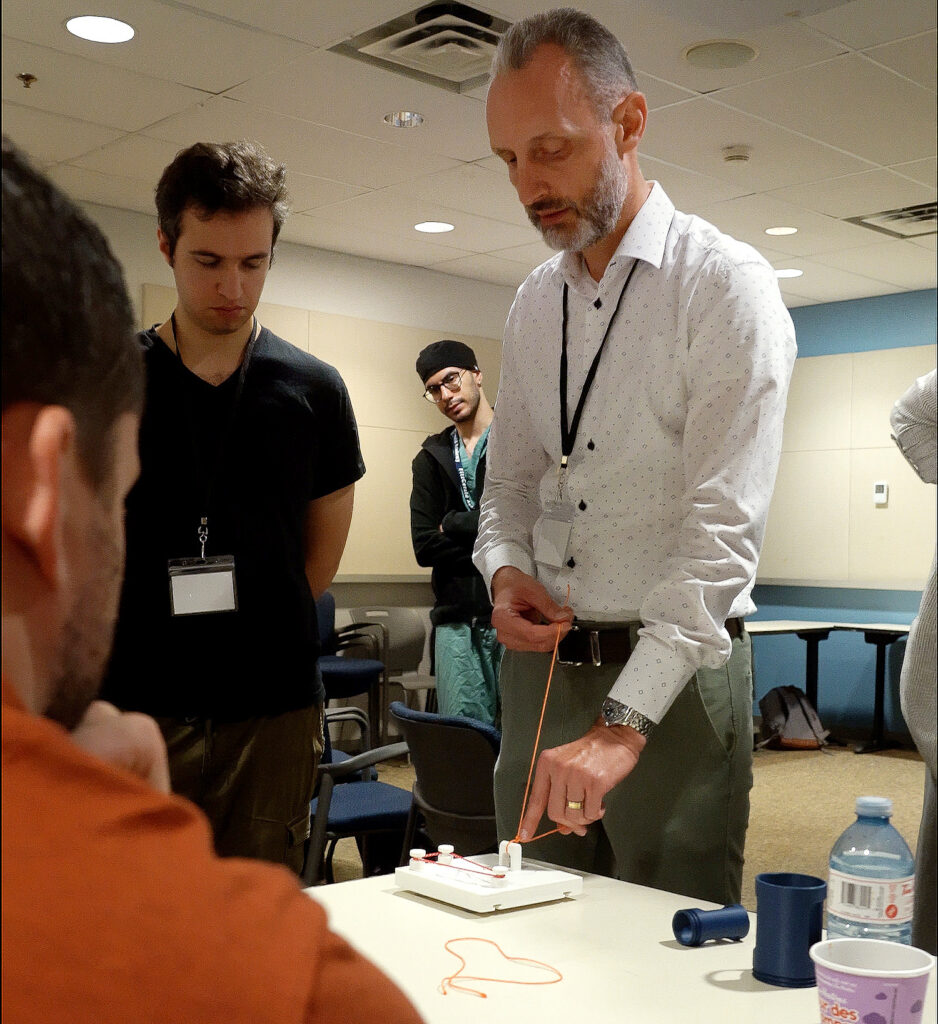How a 3D-printed surgical knot-tying board created by medical students is helping learners master one of surgery’s most essential skills

Marco Istasy and Tiffany Ni designed a new surgical knot-tying board to help teach the next generation of surgeons.
As medical students, Tiffany Ni and Marco Istasy struggled to find an effective way to practice an essential surgical skill: knot-tying.
For a surgeon, knot-tying requires swift, precise movements and takes considerable practice to perfect. A well-tied knot can have an enormous impact on a patient’s outcome. It can help control bleeding, support healing, and reduce the risk of complications and infection. “It’s one of the tenets of surgical training,” says Istasy, currently a resident at Unity Health Toronto.

Without a standardized learning tool, students often resorted to practicing by tying string around a doorknob, a water bottle, or even their own thigh. None of these methods effectively simulated real-life situations where surgeons might need to quickly close a wound or tie off a blood vessel.
So, the two friends put their heads together and created a surgical knot-tying board – with the help of a 3D printer. The goal was to produce a low-cost, modular tool that was easy to manufacture and tailored learners needs. After several iterations, the pair finally landed on a design.
Now, that simple idea has evolved into a commercially available learning tool being used to teach surgical residents at hospitals across the country, including Unity Health Toronto, where it all began.
Enjoying this story? Sign up for the Unity Health Toronto newsletter, a monthly update on the latest news, stories, patient voices and research emailed directly to subscribers.
The board features suction cups on its base to secure it to a flat surface, three pegs to stretch a rubber band (allowing the user to practice tying across different tension gradients), a bar to store string and rubber bands, and modular tubes that can be threaded into the board to simulate tying within a body cavity.
Back in 2020, when the pair took their prototype to Dr. Andrew Brown, an interventional radiologist at St. Michael’s Hospital, he was immediately impressed.

“We knew he shared our interest in 3D printing and entrepreneurship in medicine,” said Ni, a mentee of Dr. Brown’s in interventional radiology.
“Dr. Brown’s feedback was immensely valuable in the iteration of the product,” said Istasy. “He connected us with residents and fellows from the Division of General Surgery and Vascular Surgery at Unity Health and allowed us to gather end-user feedback about our product.”
Unity Health is one of the top learning destinations for medical residents and early-career health care professionals. More than 6,300 trainees in over 30 different health disciplines come to Unity Health’s three hospital sites each year.
In 2020, the pair launched RISE MD (Research, Innovation, Simulation in Education) a start-up company focused on creating 3D printed medical tools, beginning with their first product, the RISE MD surgical knot-tying board.
Brown also introduced the pair to Dr. Mark Wheatcroft, a vascular surgeon at St. Michael’s Hospital, who purchased a number of the boards to use with his own students.
“Knot-tying boards have been around for decades – I had one when I was a medical student – but the design and manufacture of the Rise MD knot-tying board is very innovative,” said Wheatcroft. “It is compact, versatile and robust.”

Each year, Dr. Wheatcroft and others run a week-long bootcamp called the National Vascular Bootcamp where a dozen surgical residents from across Canada come to hone their skills.
“Having a compact board that they can partially disassemble and pack in their bags for travel is a real bonus,” he said.
This summer, at the session hosted by UHN, a dozen of these surgical residents were huddled tightly around Dr. Wheatcroft as he used one of Rise MD boards to demonstrate how to tie a flat reef knot – a surgical knot often used to join edges of a wound or to tie off blood vessels.
“It is a fundamental and absolutely essential skill,” says Dr. Wheatcroft.
Istasy and Ni looked on as the residents returned to their stations and carefully attempted to replicate the smooth, elegant movements Dr. Wheatcroft had demonstrated on the knot-tying boards they designed.
“Watching surgical residents at the boot camp practice one of the most foundational skills on our board is both gratifying and humbling,” said Ni. “Marco and I originally created this device to fill a gap in our own training, so seeing it help others in their learning journey is incredibly meaningful.”
